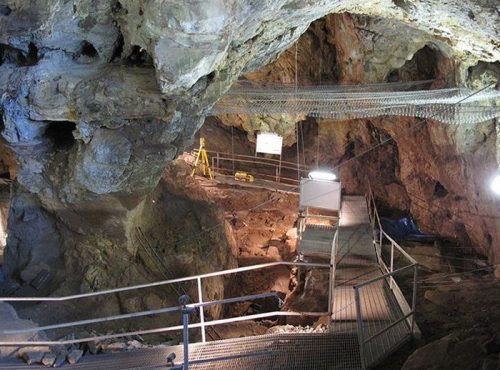
In a remarkable archaeological find, the remains of a young man dating back 28,000 years have been unearthed in Italy’s Arene Candide Cave. This site, nestled in the northwestern region of Italy near the Mediterranean, has long been a focal point of scientific interest. The article delves into the significance of this discovery and sheds light on intriguing insights into the prehistoric practices and behaviors of our ancient ancestors.

- Arene Candide Cave: An Archaeological Gem
Arene Candide Cave, situated just 90 meters above sea level with a stunning coastal panorama, has been a focal point of scientific interest for decades. Its name, translating to “white sands,” alludes to the sand dunes adjacent to the cave entrance. The archaeological significance of this site lies in its rich trove of human remains and artifacts, providing researchers with invaluable insights into the Neolithic and Paleolithic periods. - A Glimpse into Prehistoric Life
The archaeological significance of Arene Candide Cave stems from its rich trove of human remains and artifacts, providing researchers with invaluable insights into the Neolithic and Paleolithic periods. Over the years, many intriguing findings have emerged from this site, revealing a tapestry of ancient burial practices and cultural activities. - The Prince of Arene Candide
One of the most captivating discoveries within the cave is the skeleton of a young man affectionately referred to as “The Prince” (Il Principe). This designation is bestowed upon him due to his regal burial, which involved a carefully arranged arrangement of perforated shells. - The Burial Riddle
The young man’s head was surrounded by thousands of perforated shells, a practice that has puzzled researchers. The shells are believed to have been sourced from the nearby Ligurian Sea, and their significance remains a subject of ongoing investigation. - A Timeline of Human Activity
The Arene Candide Cave provides a chronological window into human history, spanning over 40,000 years. Evidence of intentional burials, some as old as 12,000 years, underscores the cave’s importance as a repository of ancient rites and practices. - Unraveling the Mystery
Scientists from the University of Montreal, Arizona State University, and the University of Genoa are currently analyzing 29 seashell fragments recovered from the cave. They believe these fragments hold clues to ancient burial practices and the cultural significance of the shells.
Conclusion:

The archaeological discovery in Arene Candide Cave offers a fascinating glimpse into the lives of our ancient ancestors. As researchers continue to unravel the mysteries surrounding this remarkable find, it opens new avenues for understanding prehistoric practices and behaviors, enriching our knowledge of human history.





